Departed fromArgentina to Italy to fulfill his dream of building cars with his name. Arrived in Modena, finding luck by creating unique and special sports cars. You think I’m talking about Horacio Pagani, the founder of the homonymous Italian car manufacturer? Well, no. Before the mythical Horacio, in 60’s, another Argentine tried his luck in Italy in the automotive world: Alexander of Tomaso. A volcanic, explosive, histrionic character. An unpredictable entrepreneur who for almost 40 years gave birth to one Crazy and Istrian house like him, De Tomaso. Welcome back to Auto for Dummies, and today we continue our journey among the missing Italian houses with the second protagonist, the Italian-Argentine De Tomaso. Are you ready? Fasten your seat belts: we’re having fun today.
Who is Alejandro de Tomaso?
Let’s start immediately by understanding the genesis of this incredible industrial history by talking about the protagonist of the climb of De Tomaso, the founder Alejandro. As you will see, the story of the Italo-Argentine executive is really crazy, and alone deserves a dedicated episode. Today, however, we are talking about his creature, born almost by chance after a comfortable life in Argentina.
In fact, Alejandro de Tomaso was born in Buenos Aires the July 10, 1929, son of the Italian-Argentine Antonio de Tomaso, born in Naples but now settled in South America. Here, the de Tomaso family was one of the most important in the country: the father had been Minister of Agriculture in the 1930s, while his mother belonged to one of the more powerful families of Argentine agriculture. The family owned the Estancia de Tomaso, a farm of over 120,000 hectares, and the young Alejandro dabbled in politics and motor racing. He started racing at a young age with a Bugatti Type 35, achieving good results, but in a few years the whole world of de Tomaso changed.
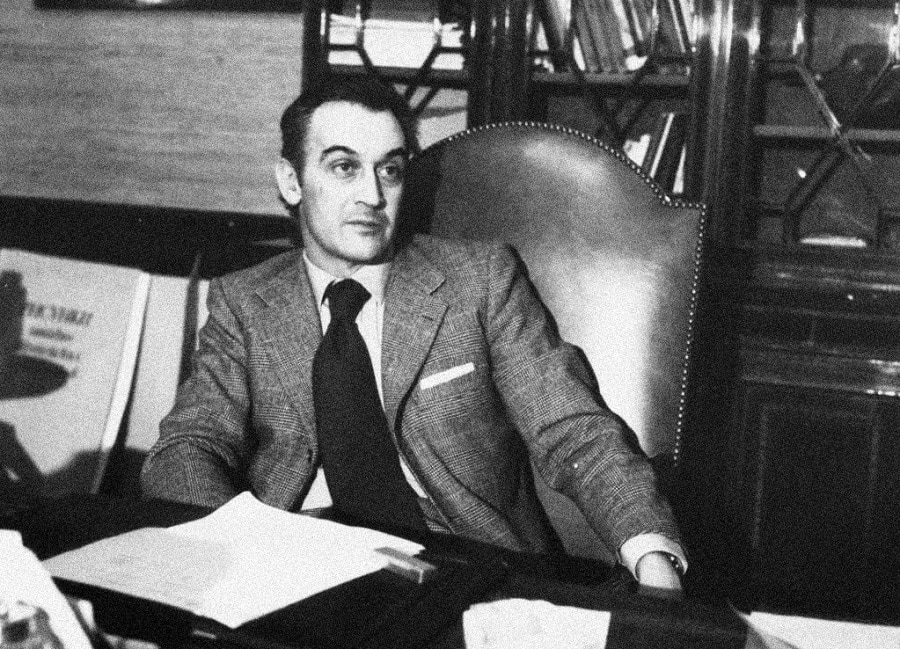
In 1946 the General was elected as President of the Argentine Republic Juan Peròn, which from that moment established a totalitarian regime together with his wife Evita. The establishment of the peronist regime it was a real one defeat for the de Tomaso family, who it lost all its prestige and its riches. After participated in the anti-Peronist uprisings and the attempted coup against Peron, de Tomaso was first imprisoned and then decided to escape, leaving his first wife and three children in Argentina.
De Tomaso left everything in Argentina to arrive in Italy with little or nothing in his pocket and try his luck in the world he loved most: theautomobile. His experience in the world of engines, and the popularity of Argentine pilots thanks to the exploits of Fangio and Gonzàlez, made him get a role from driver with Maserati in 1955 and 1956, and then with the O.S.C.A. of the Maserati Brothers. Thanks to the friendship born with the Maserati brothers, Alejandro founded a small workshop for the elaboration of engines and racing cars. But it was during this racing period that his life changed forever.
From driver to manufacturer: the start of Automobili De Tomaso and Vallelunga
In the races in which he took part there was always one American Girl, who ran under the name of Isabelle, settled in Modena to run. Falling in love with the woman, de Tomaso discovered that the woman (whom he later married in second marriage) hidden under that pseudonym was Elizabeth Haskell, sister of the president of the Rowan Controller Industries, a huge American company that produces electrical systems for automobiles, collaborator of GM and Ford. Haskell herself then inherited from grandfather a considerable number of shares in GM and Ford: thanks to her, de Tomaso exploited a privileged channel with the United States, which was fundamental to the story of De Tomaso. In 1959, he obtained a substantial support from Rowan, Alejandro founded Automobili de Tomaso in Modena, which was in charge of producing racing cars for various customers.
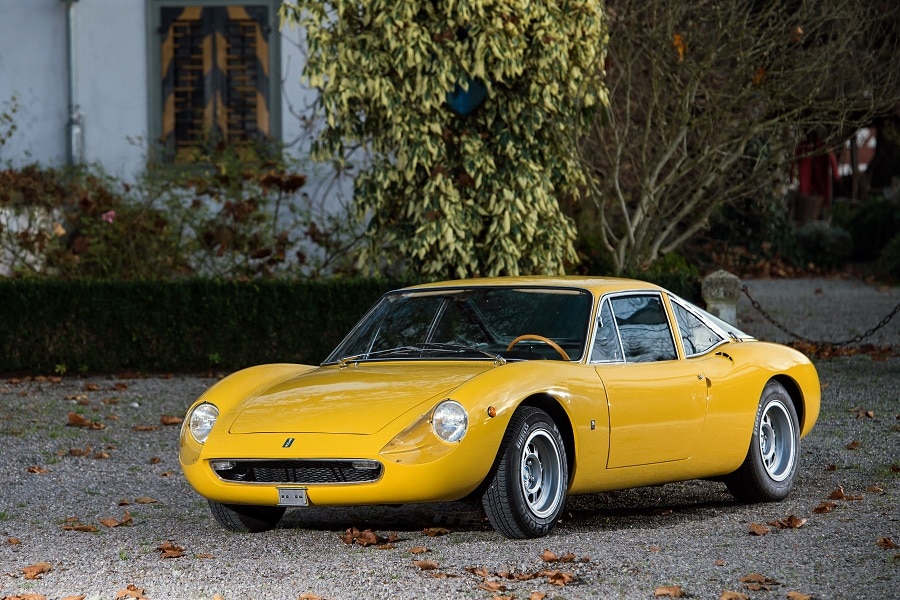
It was at this time that de Tomaso finally had some financial luck in return. And, with the newfound availability, De Tomaso’s dream began to take shape. After the racing cars, in fact, in 1964 arrived there the first road car of the Italo-Argentine company, the De Tomaso Vallelunga. Named in honor of the Roman track on which De Tomaso tested his racing cars, the Vallelunga perfectly embodied de Tomaso’s ideas about a car with his name. In reality, de Tomaso wanted to sell the Vallelunga project to another house, but no one seemed interested, so the small Modenese house to produce the first de Tomaso brand car. By the way: as a logo, Alejandro chose the T used by the father for cattle, on one white and light blue background, like the flag of his Argentina.

As a racing driver, the Italian-Argentine wanted his cars to be as sporty and fast as possible, without too much attention to comfort or luxury. For this, in fact, the Vallelunga was a car extremely light and compact, with full fiberglass bodywork. The single-beam aluminum frame, the four-wheel disc brakes and the independent suspension, taken directly from a Formula 3 of the House, make it clear that it was not a Gran Turismo, but a racing car approved for the road. The engine, the 1.6 4-cylinder 104 hp Ford Cortina, and the traction were rear. The car was very difficult to drive, suitable only for expert hands, but very fast and performing thanks to the weight of only 800 kg, capable of over 215 km/h. The House only managed to sell 54 specimens: not really a success, but the first step towards a much more protagonist future.
The P70, the collaboration that did not go through with Shelby
From that small 1.6 four-cylinder derived from the Cortina and from that small sports car, de Tomaso realized that, with a little luck and resourcefulness, he could be successful in this world. The Modenese house immediately set to work on another project, the P70. It was a racing car equipped with single beam frame in aluminum, with the engine as a structural element of the project, and equipped with a movable rear wing. A very project innovative, which convinced Ford and Peter Brock, Shelby employee, to give De Tomaso a chance and try to replace the old Lang Cooper used by Shelby with the new P70. The project was running well: the P70 was designed to use Ford-Shelby V8 engines up to 6.8 liters and over 500hp.

In 1965, however, Carroll Shelby was called by Ford himself to develop the GT40, a story that we know well thanks also to the film Le Mans ’66 – The great challenge. Shelby then, who could not support two similar projects, he abandoned De Tomaso to his fate and left the P70 project. Alejandro at what point was furious. The Argentine volcanic was in fact known to be one hot head, capable of mistreating without much regard those who worked with him. From that moment on, the competition with Shelby was enormous, and it was fully revealed in the 1967 with the new road car of the house, the legendary one By Tomaso Mangusta.
The collaboration with Ford is born: here is the Mangusta, the first Italian muscle car
And the name immediately indicated that Alejandro had not yet digested the wrong he had suffered. The mongoose, in fact, is the only mammal capable of fighting (and winning) against the cobra. Yes, that’s right, the Cobra, just like Shelby’s sporty discovery.
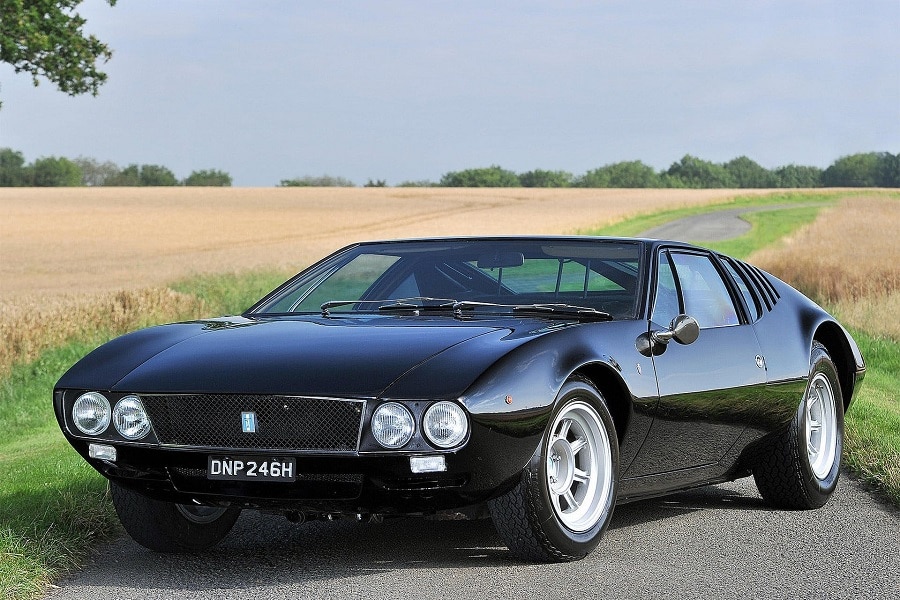
A true declaration of war: our Mongoose arrives to eat your Cobra. The Italo-Argentine company decided to use the single beam frame with semi-load-bearing engine designed for the P70. It is a solution indeed futuristic for the road cars of those years, still embryonic even in Formula 1. The independent suspensions, the disc brakes on the four wheels and the hood and doors in aluminum complete a very refined. This refinement is then dressed up by a elegant and sporty bodywork, drawn by the bodywork Ghia. Specifically, the pencil is by a young designer who, over the years, will have some success: Giorgetto Giugiaro. The young Giorgetto gave the Mangusta a peculiarity that is still unique today: the “butterfly” engine hood, with two half doors with vertical opening to access the engine. Unique, just as the engine under the hood is unique and special.
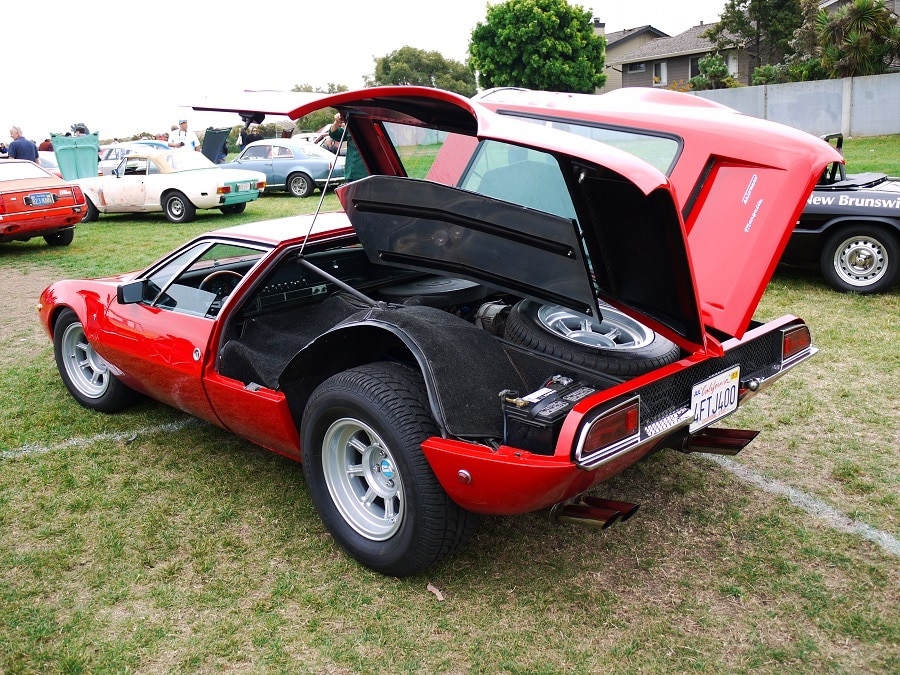
Thanks to his wife’s acquaintances, in fact, Alejandro was able to set up a collaboration with Ford America for the supply of mechanical components for its cars. From here comes the cross and delight of De Tomaso history: the Ford V8 engine. As all car enthusiasts know, the American V8s, especially those Ford, they are very powerful and vigorous, and with a crazy sound. Thanks to them, the Mangusta immediately became known as the first Italian muscle car. This engine however had a huge flaw: the weight. Made entirely of cast iron, the Ford V8 really was very heavy, and while being able to deliver well 306 CV thanks to the care of De Tomaso, completely unbalanced the car.

In fact, being mounted behind, the V8 made the Mangusta very difficult to drive, capable of hurting the driver’s first mistake. In De Tomaso they tried to solve the problem by lightening the engine with magnesium parts, but saving only 25 kg. In addition, they tried to position the engine lower by using three small clutch plates instead of a large one. The result, however, was far from ideal: 32% of the weight in front, as much as 68% behind. The Mangusta was beautiful, but difficult, very difficult to drive. Thanks to the power of his engine, however, with a driver with a great handle at the wheel he was able to give a hard time to all rivals. De Tomaso produced 401 specimens of the Mongoose from 1967 to 1971, paving the way for a new sports car.
The (unfortunate) adventure in Formula 1 with Williams and Ford: the 505 between failures and tragedies
After the sales success of the Mangusta (remember that in the ’70s 400 copies were not bad!), De Tomaso turned his gaze to his never dormant love: the Formula 1. In fact, after having attempted the way of the Regina Class from pilot, resulting in a ninth place in Argentina in 1957, De Tomaso returned to Formula 1 in 1970 come builder.
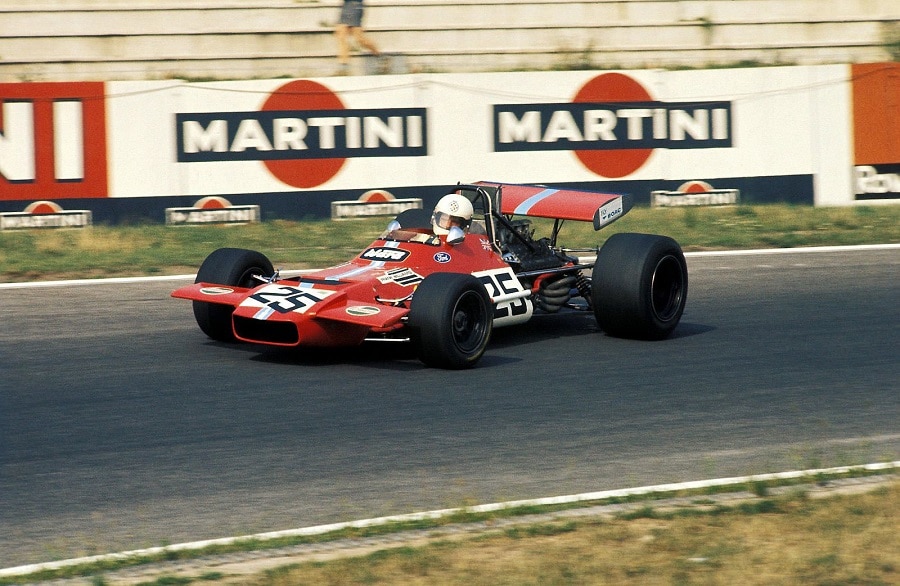
The car, the De Tomaso 505, was developed and built by the young engineer Gian Paolo Dallara and used by an emerging young team, the Williams. At the time, in fact, the Frank Williams Racing Cars had debuted the previous year in F1, obtaining two podiums with the English driver Piers Courage. This unexpected success convinced de Tomaso to collaborate with Williams, making his first F1. The 505, equipped with …






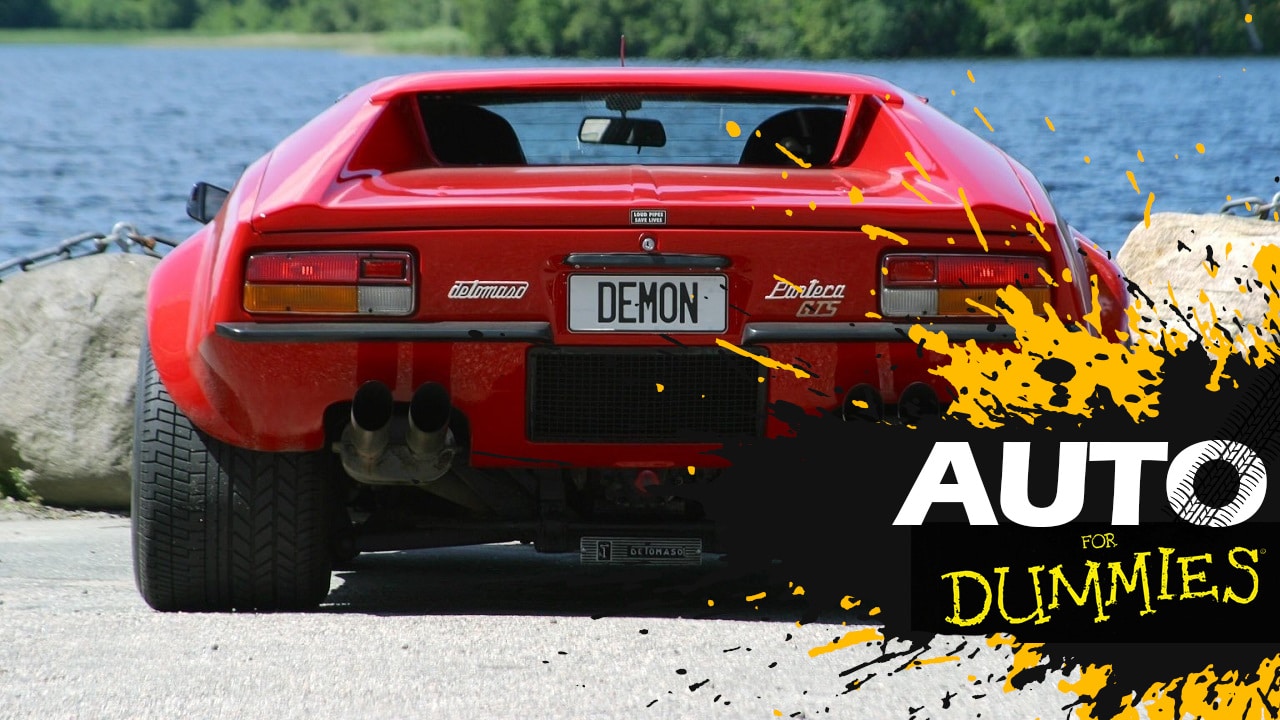









Leave a Reply
View Comments